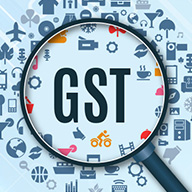Introduction to Secondary Adjustment - What you need to know

Legal & Compliance
410 week ago — 9 min read
The concept of secondary adjustment is a globally recognised concept. It is a part of transfer price (TP) Regulations in many developed economies like the United States and the countries of the EU (European Union). A transfer price is the price at which divisions of a company transact with each other, such as the trade of supplies or labor between departments. Transfer prices are used when individual entities of a larger multi-entity firm are treated and measured as separately run entities.
India has inserted this concept in its tax jurisprudence nearly 16 years after transfer pricing provisions were introduced in the income tax law back in 2001.
OECD Transfer Pricing Guidelines
The OECD (Organisation of Economic Co-operation and Development) in its Guidelines ”The OECD Transfer Pricing Guidelines for Multinational Corporations and Tax Administrations" defines the term secondary adjustment as “an adjustment that arises from imposing tax on a secondary transaction”. It is clarified what secondary transactions are as well- “a constructive transaction that some countries will assert under their domestic legislations after having proposed a primary adjustment in order to make the actual allocation of profits consistent with the primary adjustment.”
Three popular forms of Secondary Adjustments internationally
1. Deemed dividend approach - Excess amount retained by the AE (Associated Enterprise) is considered as deemed dividend subject to withholding tax
2. Deemed loan approach - Excess amount retained by the AE is considered as deemed loan
3. Equity Contribution - Excess amount retained by the AE is considered as deemed equity contribution by the tax payer
Legal Provisions
The legal provisions addressing secondary adjustments seek to target such cash/fund benefits by applying a tax charge on the excess cash benefit arising on non-arm’s length pricing, ensuring that actual allocation of profits is consistent with the primary adjustment.
Transfer pricing regulations ensure that there is a correct allocation of taxable profits amongst various taxing jurisdictions. In case if the transaction was not undertaken at arm’s length (i.e. expense more than arm’s length, or income less than arm’s length), a primary adjustment is made to the taxable profits of the taxpayer to align the transfer price with the arm’s length price (“ALP”). This primary adjustment may be made by the tax payer on his own motion (suo-moto) or by the local tax authorities.
Indian Legislation
The Finance Act, 2017 inserted section 92CE in the Income Tax Act, 1961 with effect from April 1, 2018 to provide for secondary adjustment by attributing income to the excess money lying in the hands of the associated enterprise, in order to make the actual allocation of funds consistent with that of the primary transfer pricing adjustment.
The Central Board of Direct Taxes (CBDT) has recently notified Rule 10CB of Section 92CE(2) under the Income Tax Act, 1961, making it clear that where as a result of primary adjustment to the transfer price, there is an increase in the total income or reduction in loss of the taxpayer, the excess money which is available with its associated enterprise needs to be repatriated to the Indian entity.
The Rule 10CB prescribes the time limit for repatriation of excess money and the rate of interest to be applied for computing the income in case of failure to repatriate the excess money within the prescribed time limit. Different rates of interest have been provided for international transactions denominated in Indian currency and in foreign currency and are applicable on an annual basis.
Further, it is provided that where the money is not repatriated to India within the prescribed time, the same shall be deemed to be an advance made by the taxpayer to such associated enterprise and the interest on such advance shall be computed in prescribed manner.
Applicability
A secondary adjustment shall be made where a primary adjustment to transfer price has been made due to any of the following situations–
1. Suo moto adjustment in the return of income
2. Acceptance of adjustment proposed by the assessing officer
3. Determination in an APA (Administrative Procedure Act)
4. Adoption of safe harbour rule
5. Resolution under MAP (Mutual Agreement Procedure)
However, secondary adjustment will not be carried out, if:
1. The amount of primary adjustment made in any previous year does not exceed INR one crore made in respect of the assessment year 2017-18 and onwards
2. The primary adjustment is made in respect of an assessment year commencing on or before the 1st day of April, 2016
The time limit of 90 days for repatriation of excess money shall begin only when the primary adjustments exceeding INR. one crore made in respect of the year 2017-18 or later, attains finality.
Concluding Remarks
In practical life secondary adjustments could be constructive dividends, constructive equity contributions or deemed loans. The Government of India has decided to take the ‘deemed loan route’ while designing & framing the law.
To explore business opportunities, link with me by clicking on the 'Invite' button on my eBiz Card.
Disclaimer: The views and opinions expressed in this article are those of the author and do not necessarily reflect the views, official policy or position of GlobalLinker.
Posted by
Ameya KhareProfessional Services / Management Consultancy Firms Taxation & Regulatory Services Mumbai, India
View Ameya 's profile
SME Inspirations
Other articles written by Ameya Khare
411 week ago
Most read this week












Comments
Share this content
Please login or Register to join the discussion